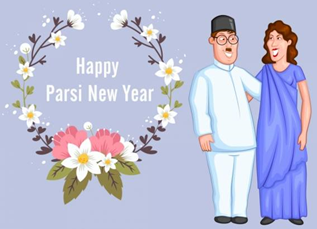Parsi New Year/ Navroz Celebrations
- Posted By
10Pointer
- Categories
World Affairs
- Published
17th Aug, 2022
-
Context
Parsi New Year (also called Navroz) is celebrated every year on August 16 by the Parsi Community.

History
- The beginning of Parsi New Year is believed to date back around 3,5000 years ago.
- This was the time when Prophet Zarathustra founded Zoroastrianism in Persia, Iran.
- The day, as per Zoroastrian philosophy, marks the annual renewal of everything in the universe.
- The term Navroz finds its association with Jamshed, an ancient Sasanian king who is believed to have introduced the Parsi calendar.
- Thus, the festival is also called Jamshed-i-Nouroz.
- Jamshed saved the world from an apocalypse that came in the form of winter and was destined to kill everyone.
- According to scriptures, in the realm of King Jamshed, there was no excessive heat or cold and no premature deaths and everyone lived happily.
- The festival came to India courtesy of an 18th-century wealthy tradesman from Surat, Nusservanji Kohyaji, who often traveled to Iran and began celebrating Nowruz in India.
What is Zoroastrianism?
- Zoroastrianism is one of the world's oldest monotheistic religions.
- For 1000 years Zoroastrianism was one of the most powerful religions in the world.
- It was the official religion of Persia (Iran) from 600 BCE to 650 CE.
- It is now one of the world's smallest religions.
- Zoroastrians believe there is one God called Ahura Mazda (Wise Lord) and He created the world.
- The Zoroastrian book of Holy Scriptures is called The Avesta.
- Zoroastrians are roughly split into two groups-
- The Parsis (‘Parsi’ is Gujarati for Persian) are the largest single group in India, with an estimated 2.6 million Zoroastrians worldwide.
- Zoroastrians (Parsis) are one of the notified minority communities.
|
Nowruz celebrations in India
- In India, the festival is observed around August 16-17 by the Parsi community following the Shahenshahi calendar which does not account for leap years, which means the holiday has now moved by 200 days from its original day.
- It is inscribed in the list of UNESCO Intangible Cultural Heritage of Humanity of India.
